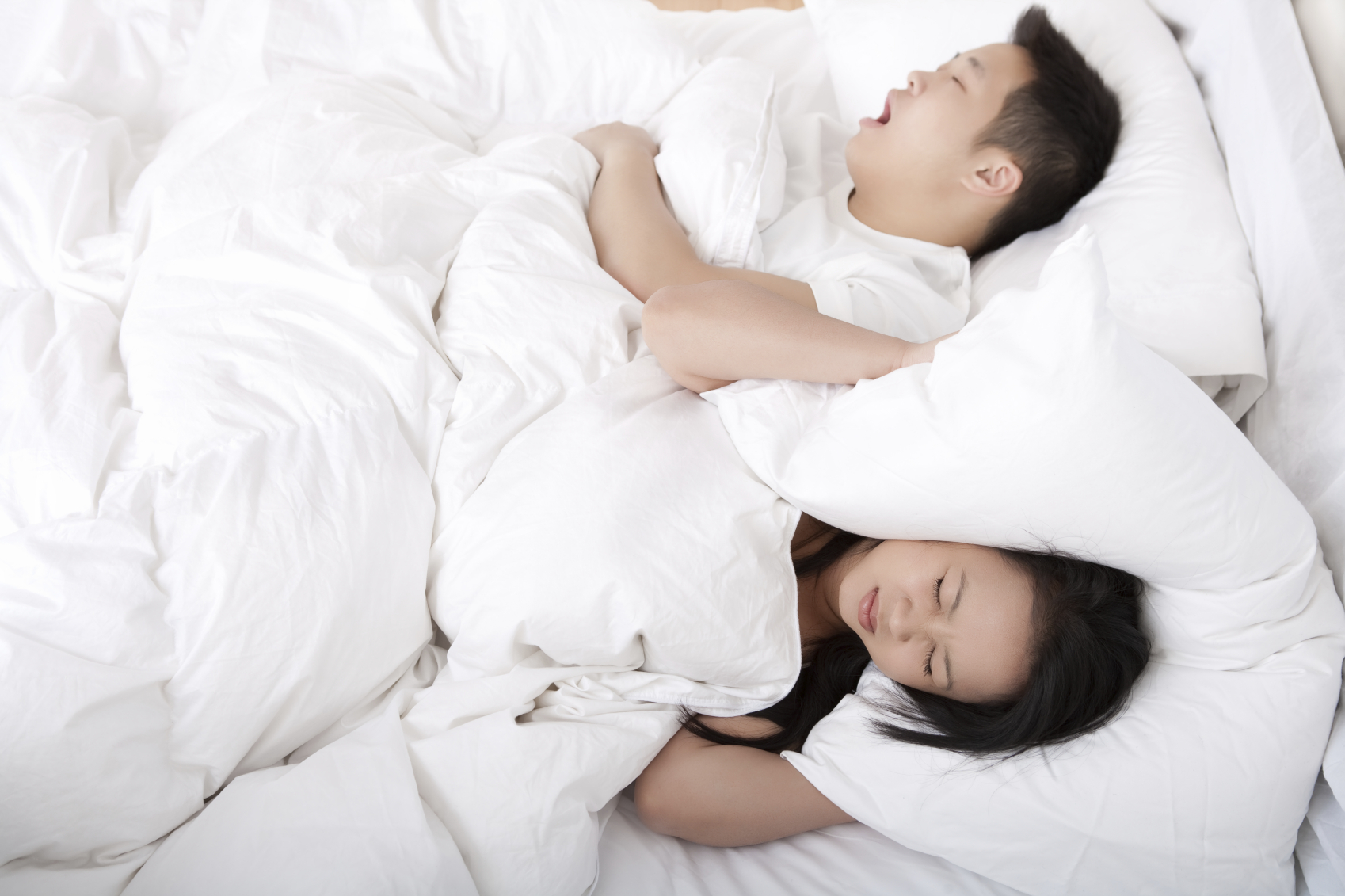
Sleep-related breathing disorders is an umbrella term used to describe disorders related to abnormal breathing during sleep where breathing is repeatedly disrupted. Bruxism is a common sleep-related movement disorder characterised by jaw clenching or teeth grinding.
Snoring
Snoring is the noise made when smooth air movement during sleep is intermittently interrupted by the partial collapse and vibration of soft tissues in the upper airway. Snoring may not only be socially embarrassing but could be a signal that the individual may be suffering from a more sinister medical disorder known as Obstructive Sleep Apnea (OSA).
Obstructive Sleep Apnea (OSA)
For those suffering from OSA, excessive daytime sleepiness due to fragmented sleep is but one reason for treatment (Take the Epworth Sleepiness Scale here). Apneics are also more likely to develop heart problems, strokes and have a higher rate of driving-related accidents. Few realise that it's also a common cause of nocturnal polyuria and erectile dysfunction in men.
Upper Airway Resistance Syndrome (UARS)
Upper Airway Resistance Syndrome is not as well known as OSA but is perhaps more relevant to children and female clientele.
Unlike OSA, there is no high male-to-female ratio in UARS. In our experience, women with autonomic dysfunction (e.g. orthostatic hypotension, very low blood pressure, cold extremities) and children with ENT issues (sinusitis, enlarged adenoids/tonsils, allergies) are particularly predisposed to UARS. These ladies deny that they snore but admit they habitually sleep on their bellies, have recurrent neck pain on waking and will often describe themselves as 'light sleepers' as if it were a blessing!
UARS patients are seldom overweight but have craniofacial and upper airway characteristics that make breathing during sleep so effortful that it interrupts normal sleep architecture. The increased upper airway resistance in this situation does not lead to cessation of airflow (apnea) or a decrease in airflow with oxygen desaturation (hypopnea) as in OSA, but instead leads to an arousal (sleep disruption) secondary to the increased work of breathing.
Multiple arousals prevent these individuals from experiencing the beneficial restorative stages of sleep like NREM Stage 3 & 4 (i.e. deep slow-wave sleep when two-thirds of our 'anti-aging' growth hormone are secreted) and REM (rapid eye movement or dream sleep). As a consequence, the UARS patient usually complains of unrefreshing sleep, frequent awakenings, fatigue and cognitive impairment. They also tend to exhibit more sleep bruxism.
All young children who are mouth breathers and exhibit one or more of the following should be screened for UARS:
restless sleep, sleep bruxism, snoring, or noisy breathing
are academically challenged or have been previously diagnosed with attention deficit hyperactivity disorder (ADHD)
show a failure to thrive (poor weight gain or weight loss)
have enlarged tonsils and adenoids
have a small or retruded lower jaw, or
seeking the services of the orthodontist to treat their Class 2 malocclusions
Patients diagnosed with UARS are also more likely to suffer from comorbid generalised persistent pain disorders like fibromyalgia, chronic fatigue syndrome, irritable bowel syndrome, chronic temporomandibular joint disorders (TMJD), chronic fatigued syndrome, interstitial cystitis and vulvar vestibulitis.
Bruxism
Sleep bruxism is a common sleep-related movement disorder characterised by jaw clenching and/or tooth grinding. Although bruxism can also occur in REM and there's some evidence that it can even trigger arousals, sleep bruxism is more commonly seen in stage 2 NREM (non-rapid eye movement) as the result rather than the cause of sleep arousals. Current research does not support the hypothesis and long-held dental dogma that occlusal interferences can initiate sleep bruxism. Note: It's important that sleep bruxism be distinguished from parafunctional phenomena like awake bruxism (e.g. diurnal stress-related habitual jaw clenching/bracing).